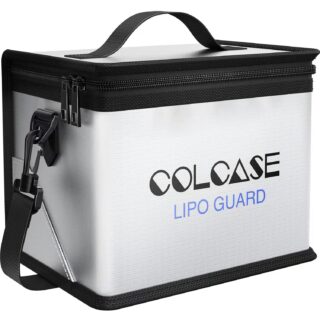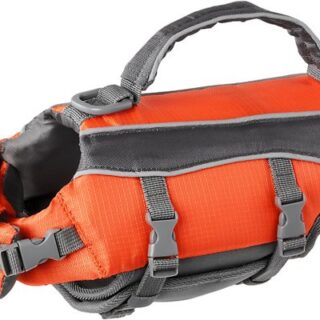The WAEC syllabus for Machine Woodworking is the topic you must study to sit for the examination. It contains the aims and objectives, notes and format for the Machine Woodworking exam.
Studying Machine Woodworking subject is necessary for your exam preparation. It will serve as a guide for you to know the topics to read. There are also notes on concepts you should pay attention to learning.
Exam preparations without using the Machine Woodworking are like going to the farm without your agricultural tools. You will end up not being productive.
Ensure you begin your exam preparations using the syllabus.
This post contains the Machine Woodworking and recommended textbooks of the West African Examination Council (WAEC).
WAEC Machine Woodworking
Examination Scheme
There will be three papers, Papers 1, 2 and 3 all of which must be taken.
Papers 1 and 2 shall be a composite paper to be taken at one sitting.
Paper 1: will consist of forty multiple-choice objective questions all of which are to be answered in 1 hour for 40 marks.
Paper 2: will consist of four short-structured questions. Candidates will be required to answer any three in 1 hour for 60 marks.
Paper 3: will consist of one practical question of 2 hours duration for 100 marks.
A list of materials for the test shall be made available to schools not less than two weeks before the paper is taken for material procurement and relevant preparations.
Paper 3: ALTERNATIVE TO PRACTICAL TEST
The Council may consider testing candidates’ ability in practical work as prescribed in the syllabus in the event that materials for the actual practical test cannot be acquired.
For this alternative test there will be one question to be answered in 2 hours for 100 marks.
WAEC Machine Woodworking Syllabus
Theory Component
| S/NO. | TOPICS | NOTES |
| 1. | Tree growth, structure and types | (a) Common West African trees; characteristics and countries of origin. (b) Tree growth, growth process, tree parts and functions. (c) Wood structure: cross-section of a tree. |
| 2 | Properties of timber | (a) Characteristics of soft and hardwoods. (b) Physical properties of common West African timbers. |
| 3 | Timber Processing: (a) conversion (b) seasoning (c) preservation |
(a) Concept of timber conversion. (b) Methods of timber conversion. (c) Common market sizes of timber. (d) Concept of timber seasoning. (e) Reasons for seasoning timber. (f) Methods of seasoning timber, including advantages and disadvantages. (g) Types and characteristics of timber preservatives. (h) Application of timber preservatives. |
| 4 | Timber defects | Types – natural and artificial defects e.g. knots, shakes, splits, etc. |
| 5 | General wood machine shop safety | (a) General machine shop safety habits. (b) Electrical and mechanical safety rules. |
| 6 | Safety equipment and devices in the wood machine shop | Identification and uses of common machine shop safety equipment and devices (e.g. fire extinguisher, first aid box, sand bucket, etc). |
| 7. | Safety in the operations of woodworking machines. | Specific safety rules guide the use of each woodworking machine. |
| 8. | Wood machine layout | (a) Principles of machine shop layout. (b) Flow diagram of a machine shop layout. |
| 9. | Woodwork machines | Parts, accessories, uses and maintenance of machines: crosscut saw, circular saw bench, surface planer, thicknesser, jigsaw, sander, band saw, tenoner, mortiser, router, spindle moulder, lathe. |
| 10. | Wood machining | Machine operations involving crosscutting, ripping, grooving surface planing, shooting, chamfering, bevelling, tapering, sanding, curve cutting, mitre cutting, tenonning, turning, rebating, mortising, shaping, moulding. |
| 11. | Business opportunities in machine woodworking | (a) Identification of business opportunities in Machine Woodworking. (b) Feasibility study of business opportunities in Machine Woodworking. |
| 12. | Funds sourcing | Sources of funds – Personal, savings, bank loans, co-operatve associations, thrifts, etc. |
| 13. | Operating and managing a wood machine Shop | Setting up and managing a machine shop. |
Practical Component
Practical activities will include
- Bevelling and tapering;
- Crosscutting;
- Grooving;
- Ripping;
- Mitring;
- Shooting, surface planning;
- thicknessing;
- curve cutting; Moulding;
- Sanding;
- Turning;
- Mortising;
- tenonning;
- Cleaning and lubricating
- machine parts Chamfering; and accessories
List of Facilities and Major Equipment
Machines
| S/NO. | DESCRIPTION | MINIMUM QUANTITY REQUIRED |
| 1. | Radial Arm CROSS CUTTING Mc | 2 |
| 2. | Circular Saw | 2 |
| 3. | Surface Planer | 2 |
| 4. | Thicknesser | 2 |
| 5. | Band Saw | 2 |
| 6. | Moticer (Hollow Square Chisel and Chain | 2 |
| 7. | Tenoner | 2 |
| 8. | Router | 2 |
| 9. | Spindle Moulder | 2 |
| 10. | Wood Turning Lathe | 2 |
| 11. | Orbital Sander | 2 |
| 12. | Veneering Press | 2 |
| 13. | Dimension Saw | 2 |
| 14. | Powered Saw | 2 |
| 15. | Jig Saw | 2 |
| 16. | Spraying Machine | 2 |
| 17. | Drill Press – Table Type | 2 |
| 18. | Drill Press – Standing Type | 2 |
| 19. | Cutter Grinding Machine | 2 |
| 20. | Saw Sharpening Machine | 2 |
Accessories
| S/NO. | DESCRIPTION | MINIMUM QUANTITY REQUIRED |
| 1. | Circular Saw Blade (rip saw, cross ant saw, combination saw) | 5 each |
| 2. | Mitre Gauge | 2 |
| 3. | Spray Gun | 2 |
| 4. | Morticing Attachments | Various |
| 5. | Turning Chisels | Various |
| 6. | Calipers (Outside and Inside) | 5 |
| 7. | Cutter Blocks and Cutters | 5 each |
| 8. | Oil Can | 5 |
| 9. | Spanners | 5 sets |
| 10. | Drill Bits | Various |
| 11. | Grinding Block | 5 |
| 12. | Grease Gun | 2 |
| 13. | Band Saw Blades (6, 12, 18 and 25mm) | 5 |
| 14. | Mortising Chisels (6, 9, 12, 15, 18 and 25 mm) | 5 each |
| 15. | Setting Pliers | 5 |
| 16. | Files (round, flat, triangular half round) | 5 each |
| 17. | Gate saw set | 5 |
Recommended Textbooks
| S/NO. | AUTHOR | TITLE | PUBLISHER |
| 1. | John R. Clayton | Machine Woodworking | Northwood Publication Ltd |
| 2. | J. A. Walton | Woodwork in theory and practice (Metric Edition) | Australasian Publishing Company (London) |
| 3. | D. M. Shaw | Woodwork Design and Practice | Hodder and Stoughton, London |
| 4. | H. E. King | General Certificate Woodwork (3rd Edition) | Harrap, London |
| 5. | D. N. Willacy | Woodwork Book 1 and 2 | Nelson, Lagos |
| 6. | Nurudeen et all | Fundamentals of Woodworking | Evans, Lagos |
| 7. | G. W. Brazier and N. A. Harris | Woodwork | Bungay, Richard City |
| 8. | J. Fierre and G. Hutchings | Advanced Woodworking and Furniture Making | |
| 9. | CESAC | Woodwork for Senior Secondary Schools | |
| 10. | J. N. K. Sackey | Woodwork for Senior Secondary Schools | Macmillan |
| 11. | Rom Pettit | Woodwork Made Simple | W. H. Allen and Co. Ltd. London. |
| 12. | John Strefford Guy McMurdo | Woodwork Technology | Schofield and Sims Ltd. |
| 13. | E. J. Wynter | Woodwork | Longman |
| 14. | Frank Hilton | Craft Technology for Carpenters and Joiners | |
| 15. | John L. Feirer and Gilbert R. Hutchings | Carpentry and Building Construction | Glencoe Publishing Company. |















Leave a Reply
You must be logged in to post a comment.